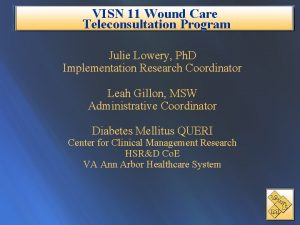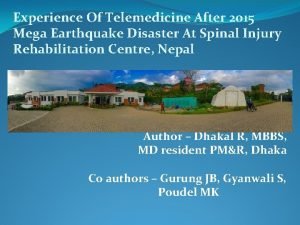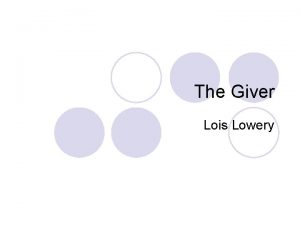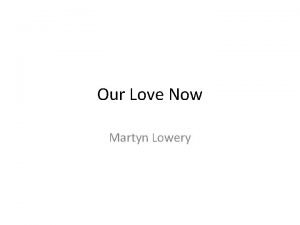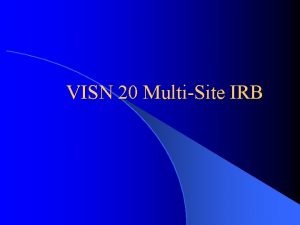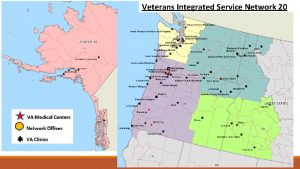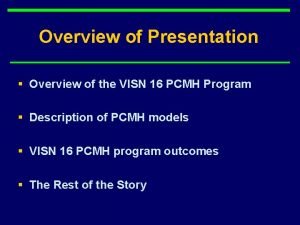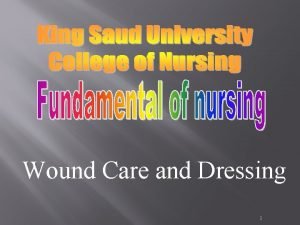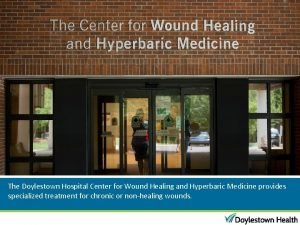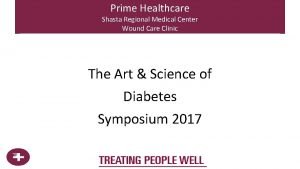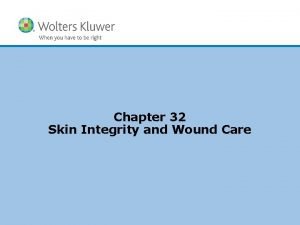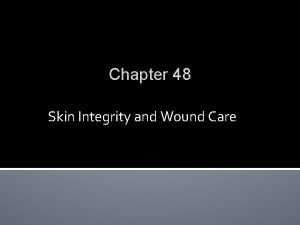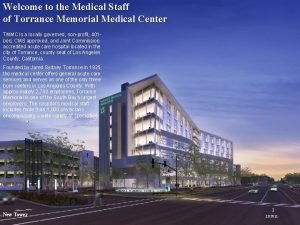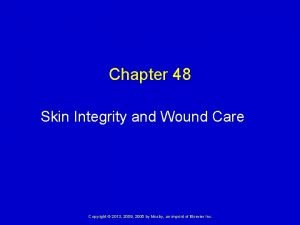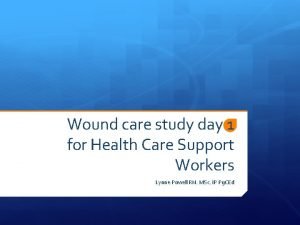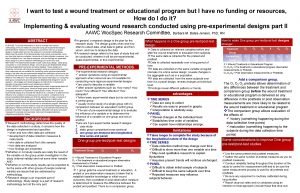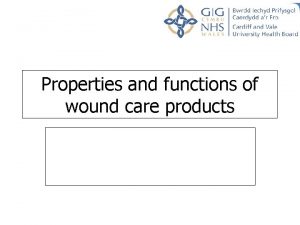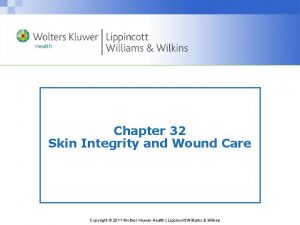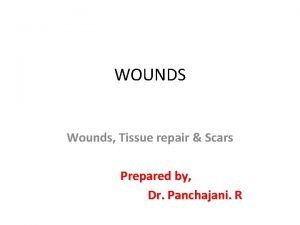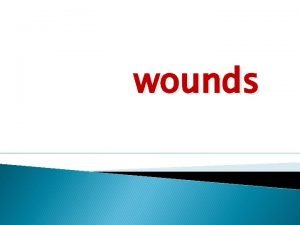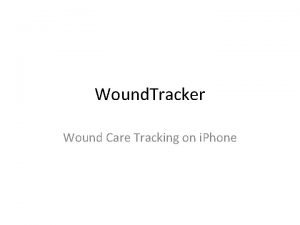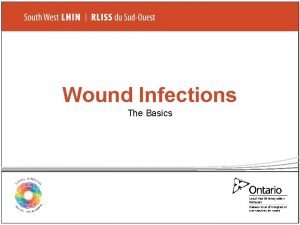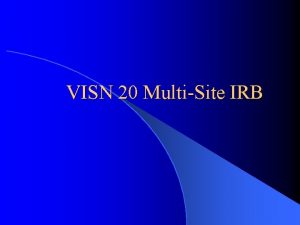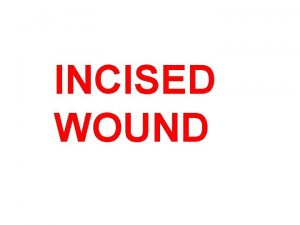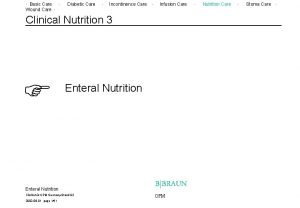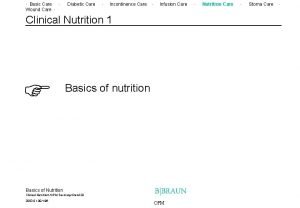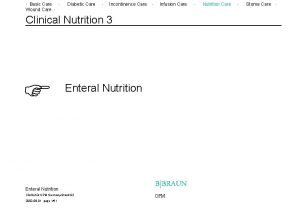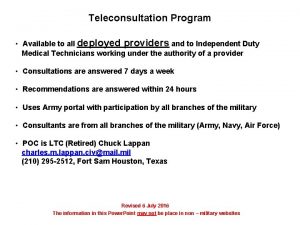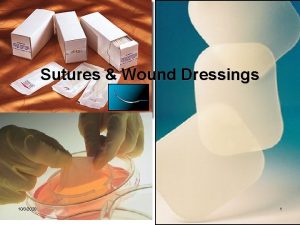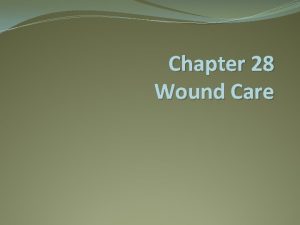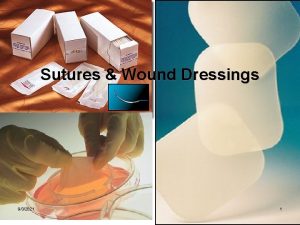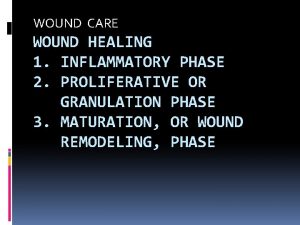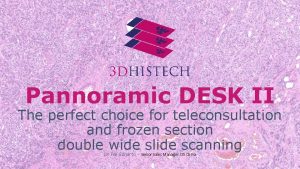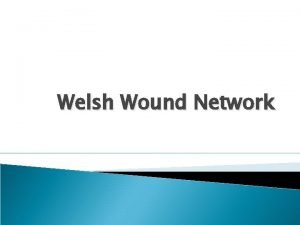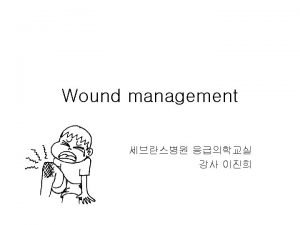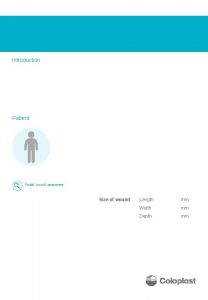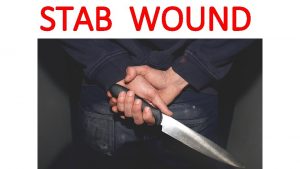VISN 11 Wound Care Teleconsultation Program Julie Lowery























- Slides: 23

VISN 11 Wound Care Teleconsultation Program Julie Lowery, Ph. D Implementation Research Coordinator Leah Gillon, MSW Administrative Coordinator Diabetes Mellitus QUERI Center for Clinical Management Research HSR&D Co. E VA Ann Arbor Healthcare System

Objectives • Determine feasibility of store-forward telemedicine system for providing consultations on chronic wounds. • Significance: Patients with chronic wounds have problems accessing specialized wound care centers.

Background “Pressure Ulcer Assessment via Telemedicine” (HSR&D funded study) • Evaluation of accuracy of Web-based, storeforward telemedicine system for monitoring status of patients with chronic wounds

Feasibility Study: Methods • October – September 2008 • Ann Arbor VAMC wound care team: wound care NP, plastic surgeon, ID specialist • Referring centers: Battle Creek and Grand Rapids § Wound care nurse requested consultations via CPRS § Digital images uploaded to VISTA Imaging § Additional clinical data entered into CPRS wound care template

Feasibility Study: Methods Ann Arbor wound care NP: • Screened all consultations • Discussed complicated cases with plastic surgeon or ID physician • Forwarded diagnostic and treatment recommendations back to nurse via CPRS

Feasibility Study: Results • • • 100 patients All male Mean age = 64 (range = 36 – 89) 100 initial visits, 366 follow-up visits 254 tele-consultations sent 1. 95 mean wounds (range = 1 -7 per patient)

Feasibility Study: Results • Wound type (N = 181 wounds, 100 patients) § § § 43% (78) 4% (8) 8% (14) 34% (62) 11% (20) Diabetic lower extremity ulcers Pressure ulcers Non-diabetic PV lower extremity ulcers Venous stasis ulcers Misc (trauma, burn, surgical)

Feasibility Study: Results • Mean wound surface area = 10. 59 cm 2 (range =. 01 – 404. 22) • In FY 07, there were 44 Ann Arbor wound care clinic appointments for Battle Creek and Grand Rapids patients vs. 5 in FY 08

Feasibility Study: Results • Average response time for diagnostic & treatment recommendations: 3. 72 days (range = 0 -12 days) • Increased observed use of debridements, biopsies for culture, topical antimicrobials, topical growth factors.

Feasibility Study: Results Patient Satisfaction Surveys 97 First Visits Did not mind having photographs taken of their wound. 94% Expressed some level of concern about the privacy of their medical information. 26% Felt it was more convenient to receive care at home site 94% Felt that had received good care during their visit 98% Would have been more confident of care in Ann Arbor 9%

Feasibility Study: Results Patient Satisfaction Surveys 277 Subsequent Visits by 59 Patients Visits during which patient felt they had received good care 98% Visits during which patient wanted services that were not 6% provided (total of 10 patients, most of which were for supplies, not services)

Retrospective and study patient chart review at remote site • January-May 2005 – 39 wound care patients • 31 with one wound • 8 with two wounds • Random sample of 31 study patients, February 2007 August 20008 – 27 wound care patients • 15 with one wound • 9 with two wounds • 3 with three wounds

Retrospective and study patient chart review at remote site Wound care 2005 Study period Dimensions of wound noted Wound bed described 60% 100% 45% 100% Debridement performed when appropriate Pulses checked when appropriate 94% 91% 54% 81%

Retrospective and study patient chart review at remote site Wound care 2005 Study period Antibiotics prescribed w/ no infection noted Culture and/or antibiotics when infection suspected Offloading plan noted with foot ulcers Hb. A 1 c ordered when appropriate Dressing plan noted 21% 14% 98% 96% 100% 95% 100% 62% 100%

Feasibility Study: Conclusion Increasing access to specialty care via telemedicine: • Increases probability of identifying a problem • Increases likelihood of aggressive treatment, and provides this treatment sooner • Identifies unnecessary treatment—especially use of antibiotics Note: Telemedicine management takes place in collaboration with local clinician. It is designed to supplement—not supplant—existing care by local provider. (Important in cases where sensitivity of telemedicine diagnosis is only fair. )

Feasibility Study: Challenges and Limitations • Substantial support necessary from local DSS coordinators, clinical applications coordinators, coding specialists, and Vista Imaging and medical media experts • Ensuring capture of both direct patient care and teleconsultation workload credit • Time constraints on staff providing consultation • Difficulty in scheduling live consultations • Challenges of working with remote IT staff to install hard- and software • Procedures to adequately capture response to consultation suggestions need development • Has not been piloted with nurses untrained in wound care

Challenge to VA To improve access to high quality health care (with corresponding improvement in outcomes) within financial constraints. Can teleconsultation provide the solution? Who will take the lead in implementing these solutions?

Next Steps • Implement in Saginaw VAMC (with wound care NP). • Implement in CBOCs (no wound care NPs). – Training? – Credentialing? • Hold wound care symposium. • Track amputations.

New Wound Template, page 1

New Wound Template, page 2

New Wound Template, page 3

Follow-up Wound Template, page 1

Follow-up Wound Template, page 2
 Visn 11
Visn 11 Teleconsultation applications nepal
Teleconsultation applications nepal The giver background
The giver background Our love now
Our love now Visn 20
Visn 20 Visn 20
Visn 20 Visn 16
Visn 16 Ryb color code wound care
Ryb color code wound care Doylestown hospital wound care center
Doylestown hospital wound care center Shasta regional wound care
Shasta regional wound care Chapter 32 skin integrity and wound care
Chapter 32 skin integrity and wound care Chapter 48 skin integrity and wound care
Chapter 48 skin integrity and wound care Aileen takahashi md torrance ca
Aileen takahashi md torrance ca Chapter 48 skin integrity and wound care
Chapter 48 skin integrity and wound care Wound care study days
Wound care study days Wound care pretest
Wound care pretest Wound care near freedom
Wound care near freedom Aqucel ag
Aqucel ag Chapter 48 skin integrity and wound care
Chapter 48 skin integrity and wound care Primary secondary tertiary care nursing
Primary secondary tertiary care nursing Rank and wakefield classification of wounds
Rank and wakefield classification of wounds Type of wound
Type of wound Wound tracking software
Wound tracking software Wound infection continuum
Wound infection continuum
